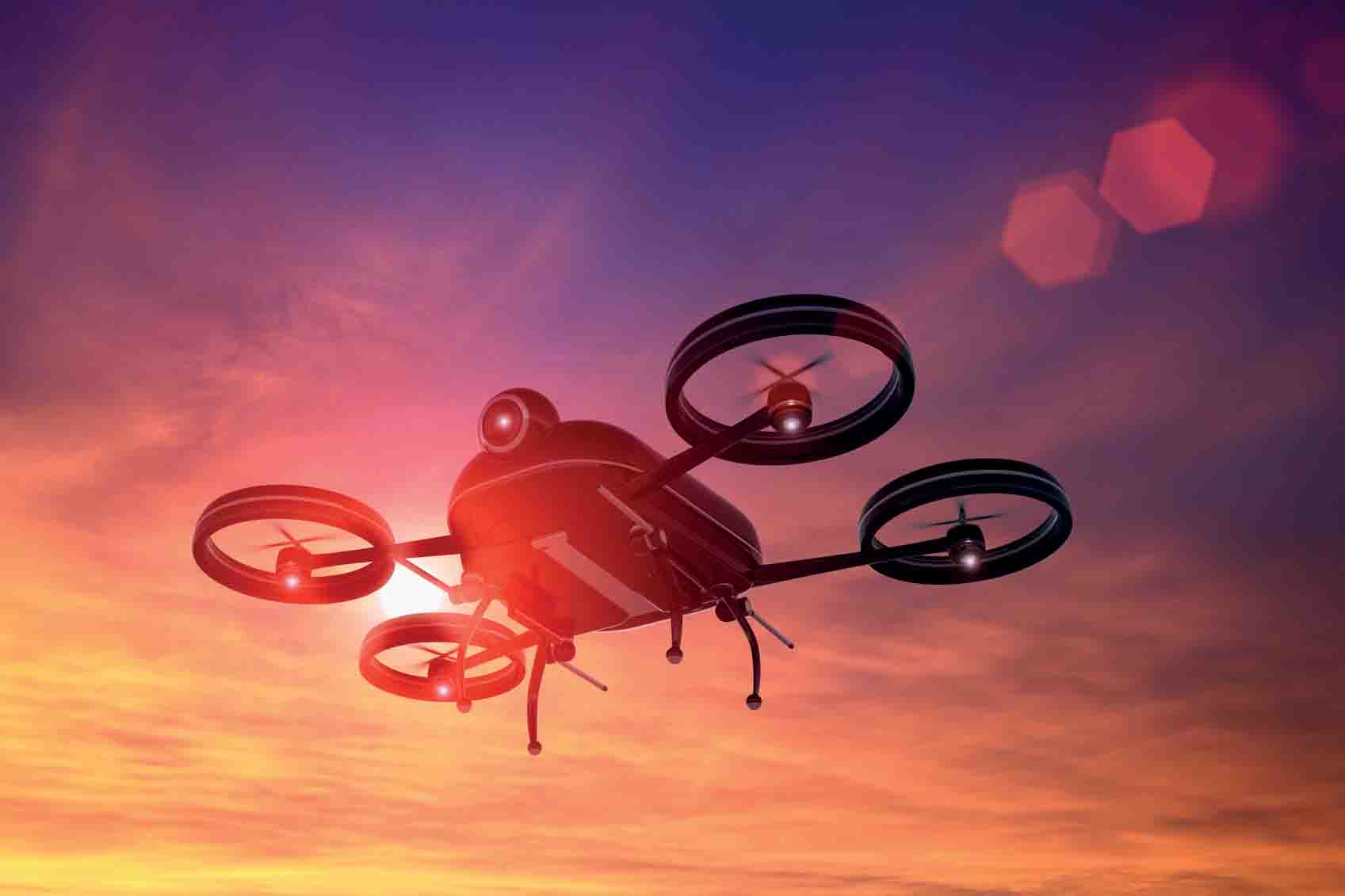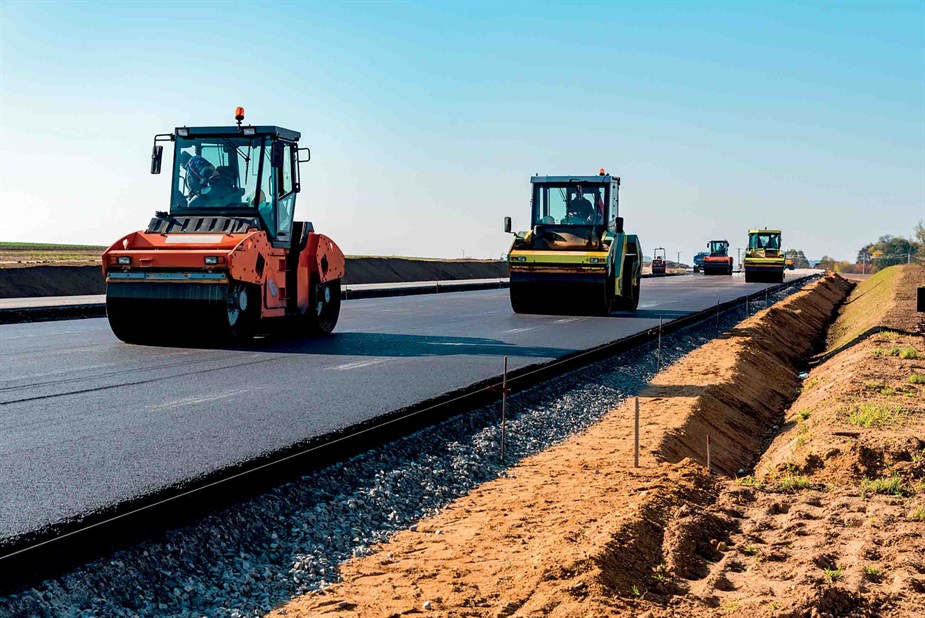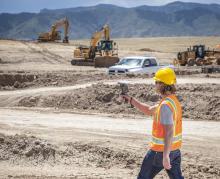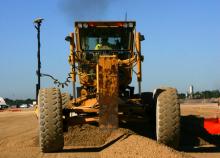
What sort of key trends will be on show, and how will these new technologies shape the sector over the coming years? Alan Dron interviewed Al Cervero, the AEM senior vice-president for construction, utility and mining on how the show will reveal what is coming
The theme for this year’s event is “Imagine what’s next”, a particularly appropriate title in view of the changes in both technology and the environment in which that technology will be used.
However, while the show is a vast shop window for new items of equipment, at least as important this year will be the behind-the-scenes political factors that will affect investment. Last November’s US presidential election caused almost as many ripples in the construction sector as it did in the political world.
The sector’s mood has changed somewhat as a result of Donald Trump’s victory, said Al Cervero, the
Prior to the election, sentiment in the industry was distinctly cautious, even sceptical, over the market’s direction, Cervero noted.
Unlike many other nations, US infrastructure budgets depend on recurring action by Congress to appropriate needed funds for highway construction programs. And although the federal highways budget, at roughly $50 billion/year, is a substantial sum, it was not enough to buoy the industry amid other economic crosscurrents.
That mood improved following November’s presidential election, given Trump’s pledge on the campaign trail to make infrastructure investments quickly. The new president has talked of a $1 trillion investment to boost the US infrastructure over the coming decade.
A stimulus bill passed early in the Obama administration saw relatively small amounts of cash finding their way into what most people would describe as infrastructure.
Hopes are higher this time around, partly due to the composition of the incoming cabinet, which has seen business executives being put in charge of most government departments, with the exception of defence and homeland security, said Cervero: “From a business perspective, there’s a lot of optimism.”
Exactly which areas of infrastructure might bene_ t from a ‘Trump trillion’ remains to be seen. Some infrastructure sectors, such as laying of fibre-optic cables with horizontal directional drilling for internet and communications purposes “are already at full steam ahead”. Companies such as Google, AT&T and Verizon are pumping considerable resources into this field.

Other areas likely to see continued, or greater, efforts are fracking as well as the more conventional oil and gas sectors. Rail is also likely to see some uplift, which means considerable amounts of aggregate will be required, although these links will be primarily for freight, rather than passenger, traffic.
However, “infrastructure has got to include roads and bridges”, said Cervero. The good news is that the outgoing administration had already approved a new, five-year highway investment plan. The first three years of that plan are funded, said Cervero and there was time remaining to get funding in place for the remainder of the plan’s duration.
While the mood in the industry is now more buoyant than a year ago, people come to CONEXPO-CON/AGG 2017 primarily to look at developments on the equipment front. The panoply of new equipment is vast, however certain trends can be discerned, said Cervero. Among the areas likely to be to the forefront this year are autonomous vehicles, wearables, connectivity and the ‘gamification’ of worksites.
“There’s no question autonomous vehicles will be prominent.”
In some sectors, of course, autonomous vehicles are already common. Open-pit mining, for example, is particularly suited as mine operators have a fixed, constant location that allows regular traffic patterns to be established. It is much more difficult to translate that to a construction job site such as a new road, which steadily moves along a planned route.
To make it possible requires what Cervero referred to as a connected job site. That requires communication standards and AEM has been instrumental in creating a new telematics standard, ISO15143-3:2016.
This covers earthmoving machinery and mobile road construction machinery, plus work site data exchange – specifically, telematics data. It specifies the communication schema designed to provide mobile machinery status data from a telematics provider's server to third-party client applications via the internet. It also enables equipment users to gather OEM equipment data into their business or fleet management software.
This sector has now reached the stage that, at this year’s show, “You’ll see a tonne of digital-connection, data-capable machines,” said Cervero.
Connectivity will also be touted as a safety measure. Companies will offer fatigue monitoring systems, where equipment will scan the operator’s eyes for signs of fatigue and report those to the site offices.
One example of connectivity will be remotely-controlled versions of the safety vehicles that follow teams of workers who put in place the orange barrels that warn drivers of the presence of roadworks or job sites.
Road workers are prone to being injured or even killed by motorists who doze off at the wheel, become confused by temporary road markings, or even deliberately ignore warning signs. For years, personnel placing the warning barrels have had the protection from a truck following behind whose rear acts as a crash barrier. That truck will increasingly become autonomous, which means that employers will not have to worry about drivers suffering injury if the vehicle is struck from the rear.

There will also, he predicted, be a focus on ‘wearables’, such as helmets with Augmented Reality viewers allowing someone to walk onto a work site and see the CAD details or the Building Information Modelling (BIM) drawings through the helmet’s screen.
Analyst firm Gartner says spending on personal technologies such as head-worn cameras and displays, ‘Internet of Things’ (IoT) sensors and virtual personal assistants is expected to grow to $2.7 trillion/year by 2019.
Many of these technologies are gaining momentum specifically in construction, according to the company. It believes that five personal technologies will disrupt the construction sector in the near future:
• Immersive Augmented Reality/Virtual Reality. Unlike virtual reality, which is currently consumer-driven, businesses are the main drivers behind adoption of augmented reality.
• Wearable devices. These will include head-worn cameras and displays, sensors and activity trackers. The smartwatch will become mainstream, Gartner predicts.
• Personal IoT sensors. By 2021, one million new IoT sensor devices will be purchased every hour of every day. New devices will open up new opportunities for business such as predictive maintenance and support for autonomous IoT objects. Gartner predicts that as soon as 2018, six billion connected ‘things’ will be requesting support.
• Virtual Personal Assistants and Bots. Mobile app usage is stabilising, with downloads plateauing as users stick with apps they trust. Future apps will report to users via a virtual personal assistant (VPA), or apps will simply be hidden in the background.
• Advanced camera and vision technologies. In 2017, Gartner expects cameras to remain a top priority for smartphone vendors. The incorporation of advanced autofocus, wide-angle lenses and above all, multi-lens capabilities, will be a key trend.
Possibly the strongest trend at CONEXPOCON/ AGG 2017 will be drones, or unmanned air systems (UAS) and their ability to map a site from the air.
This could have financial, as well as technical, benefits for contractors, said Cervero: if a drone is flown regularly over a work site and shows which areas are complete, the contractor could seek payments in instalments, rather than having to wait until the entire project is finished. Some drones can communicate directly with machines on the project site, alerting them to areas that should be tackled next.
The anticipated boom in the number of UAS brings its own complications, notably the risk of collisions between drones and the need for cybersecurity to prevent them being hacked. The latter problem is being tackled by AT&T and NASA, which are formulating ways to boost safety and prevent interference. With drones becoming common, the special drone cage at CONEXPO-CON/AGG 2017 is likely to be popular as visitors will be able to try their hand at flying the machines.
Three years ago, Forbes magazine predicted that 40% of Global 1,000 companies would soon be using some form of gamification as the primary mechanism to transform business operations. They would do this by making use of the human desire to compete and to encourage engagement among staff. Mobile resource management specialists Telogis, which provides fleet management software, believes that gamification can tap into the desire of workers to improve what they do.
The Telogis Coach program can improve driver safety by measuring an individual driver’s performance for factors such as harsh acceleration or idling and award that driver a score plus a ranking compared to colleagues.
However, while telematics systems can tell a manager how efficiently individual machines and their operators are performing, there remains a reluctance among bosses to monitor every move of their employees. Instead, said Cervero, managers will use that information to ‘incentivise’ groups of employees.
If machinery operators are working on a site tackling the same task, such as earthmoving, telematics give the manager the ability to tell the group: ‘This guy moved 2,000tonnes of dirt last week and did so while reducing wear and tear on his machine. He’s getting an extra $100 this week.’ The others in the team will start thinking how they, too, can work more efficiently in the hope of gaining the bonus.









